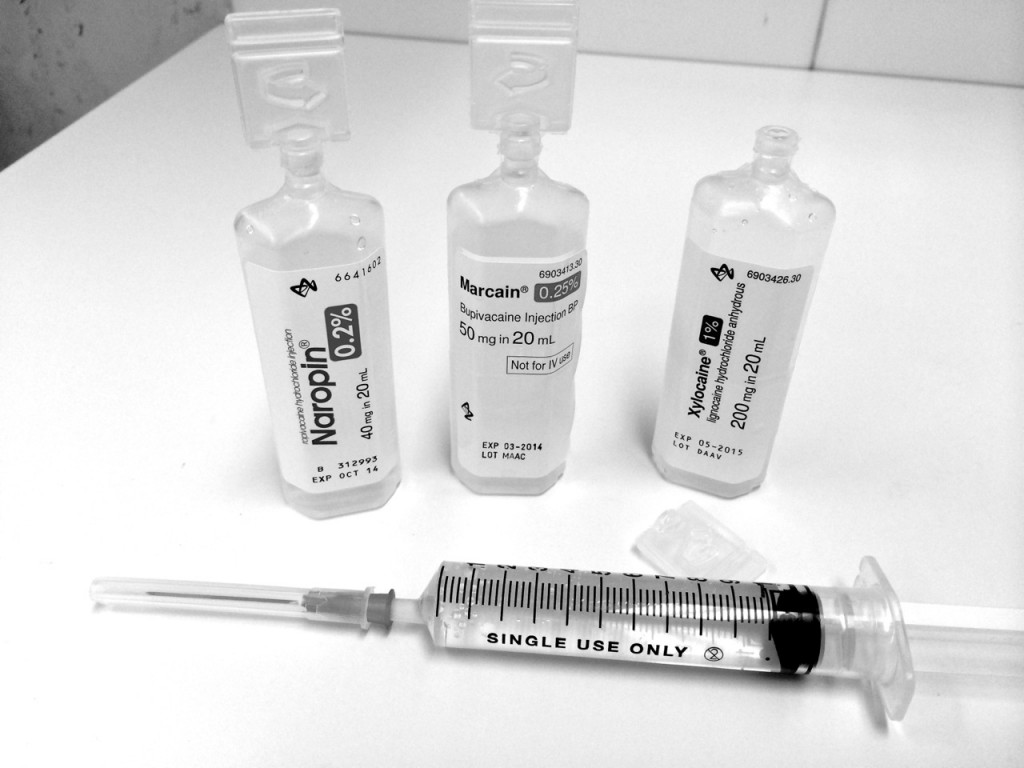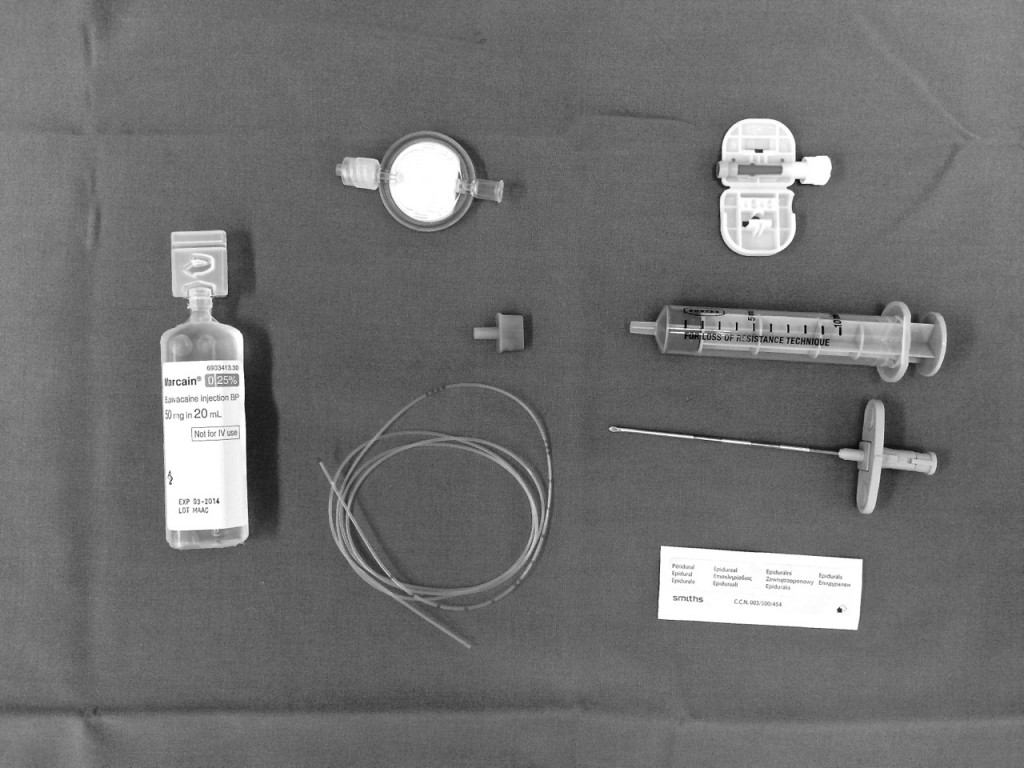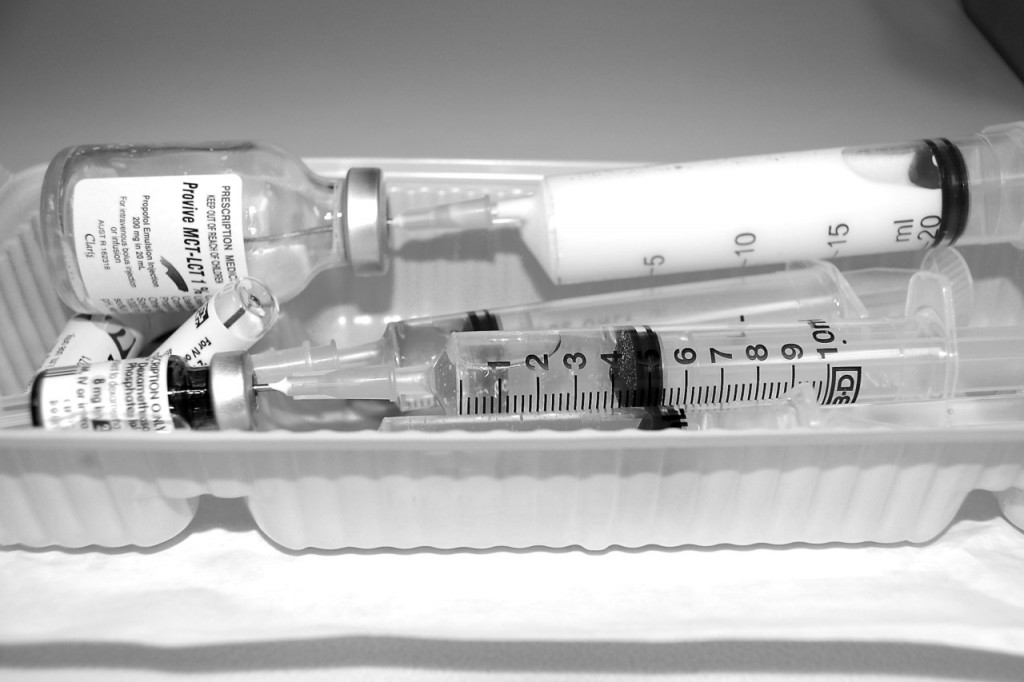This information is only a guide and should not replace information supplied by your anaesthetist. If you have any questions about your anaesthesia, please speak with your treating specialist.
Anaesthesia options
Different types of anaesthesia may be used individually or in combination as appropriate. For some types of surgery, several options are available to facilitate surgical conditions and to provide pain relief. A specialist anaesthetist will consult with the patient and the surgeon to offer the safest and most appropriate type of anaesthesia for the clinical situation. Download an information sheet here.
Local anaesthesia
 Local anaesthesia involves the injection of local anaesthetic into the tissues near the surgical site. It may be used alone or in combination with sedation or general anaesthesia after consideration of the extent and duration of the surgery and patient requests. It is usually used for minor surgery, such as toenail repair, skin lesion or a cut to remove something. It may not be appropriate if infection is present.
Local anaesthesia involves the injection of local anaesthetic into the tissues near the surgical site. It may be used alone or in combination with sedation or general anaesthesia after consideration of the extent and duration of the surgery and patient requests. It is usually used for minor surgery, such as toenail repair, skin lesion or a cut to remove something. It may not be appropriate if infection is present.
Regional anaesthesia
 Regional anaesthesia involves the injection of local anaesthetic around major nerve bundles supplying body areas, such as the thigh, ankle, forearm, hand, shoulder or abdomen. Regional anaesthesia is sometimes achieved by using a nerve-locating device, such as a nerve stimulator, or by using ultrasound. These devices help to locate the selected nerve(s) so that local anaesthetic can be delivered with improved accuracy. Regional anaesthesia may be used on its own or combined with general anaesthesia. Once local anaesthetic is injected in the desired region, patients may experience numbness and tingling in the area supplied by the nerves and it may become difficult or impossible to move that part of the body.
Regional anaesthesia involves the injection of local anaesthetic around major nerve bundles supplying body areas, such as the thigh, ankle, forearm, hand, shoulder or abdomen. Regional anaesthesia is sometimes achieved by using a nerve-locating device, such as a nerve stimulator, or by using ultrasound. These devices help to locate the selected nerve(s) so that local anaesthetic can be delivered with improved accuracy. Regional anaesthesia may be used on its own or combined with general anaesthesia. Once local anaesthetic is injected in the desired region, patients may experience numbness and tingling in the area supplied by the nerves and it may become difficult or impossible to move that part of the body.
The duration of the anaesthesia depends on which local anaesthetic is used, the region into which it is injected and whether it is maintained by continual doses or repeated injections. Typically numbness can last several hours but may last up to several days. Generally, the “heaviness” wears off within a few hours but the numbness and tingling may persist much longer. As the local anaesthetic effect wears off, numbness will diminish and surgical pain may return, in which case alternate methods of pain relief, including injections or tablets, will be prescribed.
Sedation
Conscious sedation is defined as a medication-induced state that reduces the patient’s level of consciousness during which the patient may respond purposefully to verbal commands or light touch.  A variety of medications and techniques are available for procedural sedation and/or analgesia (sedation or pain relief which is administered to allow a specialist to perform a procedure). The most common medications used that are injected into a vein are benzodiazepines (which act on the brain and the nervous system) such as midazolam for sedation and opioids (which decrease the patient’s perception of pain), such as fentanyl, for pain relief.
A variety of medications and techniques are available for procedural sedation and/or analgesia (sedation or pain relief which is administered to allow a specialist to perform a procedure). The most common medications used that are injected into a vein are benzodiazepines (which act on the brain and the nervous system) such as midazolam for sedation and opioids (which decrease the patient’s perception of pain), such as fentanyl, for pain relief.
Deep levels of sedation, where patients lose consciousness and respond only to painful touch, may be associated with the patient having difficulty with breathing normally and their heart function may be affected. The anaesthetist is trained to manage these situations.
General anaesthesia
General anaesthesia involves the patient being put into a medication-induced state which, when deep enough, means that the patient will not respond to pain and includes changes in breathing and circulation. Under general anaesthetic, a patient is in a state of carefully controlled unconsciousness.
For more information download the following brochure: Types of anaesthesia
[Sourced from the ANZCA here]

